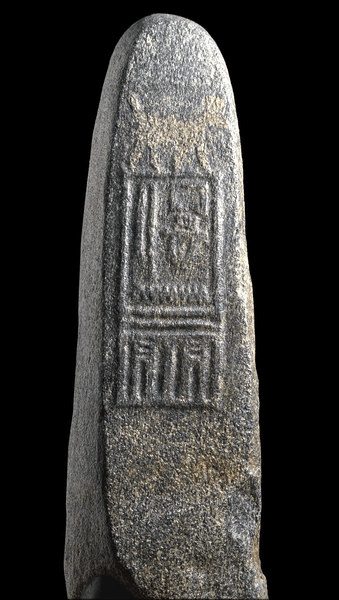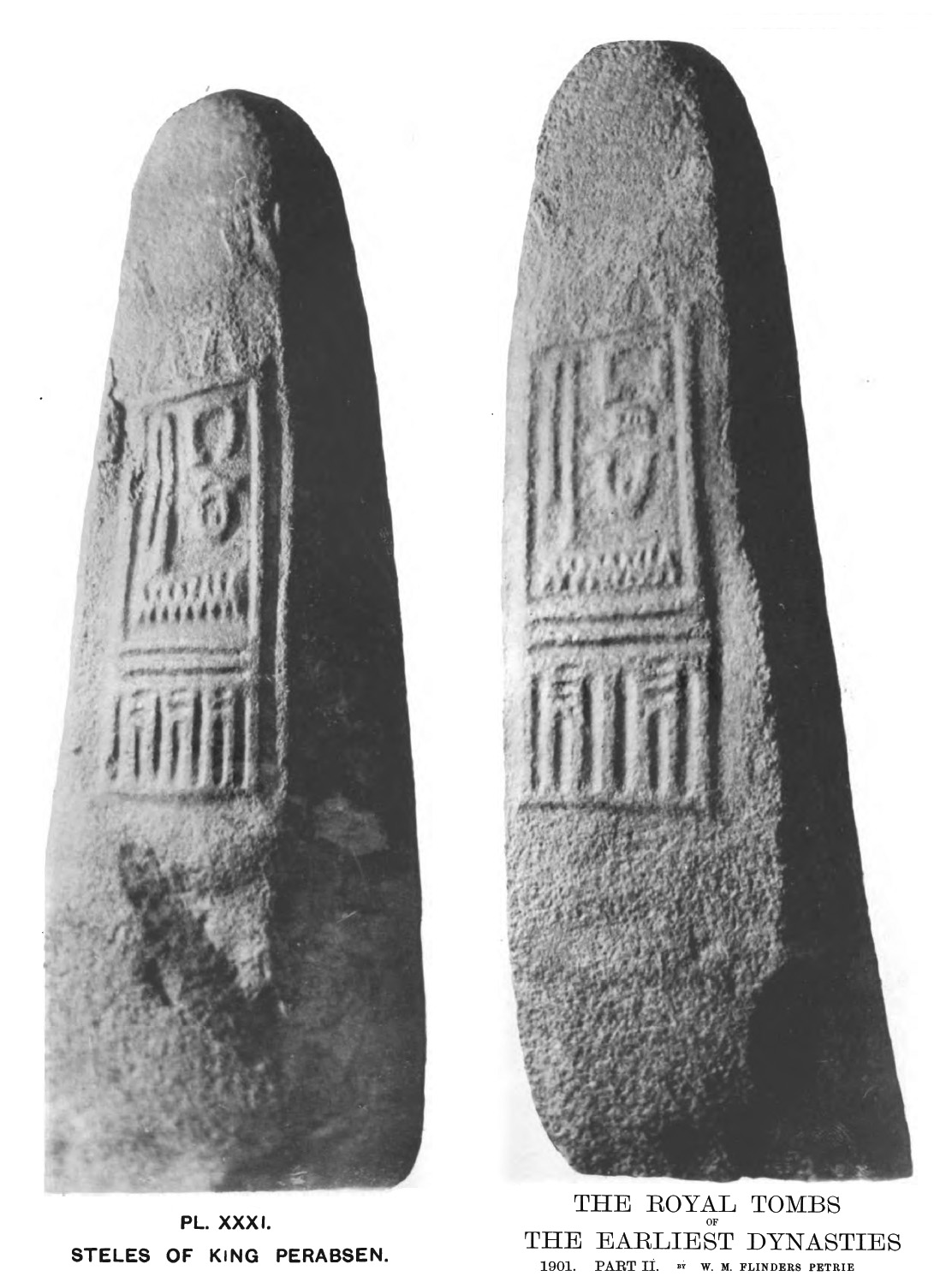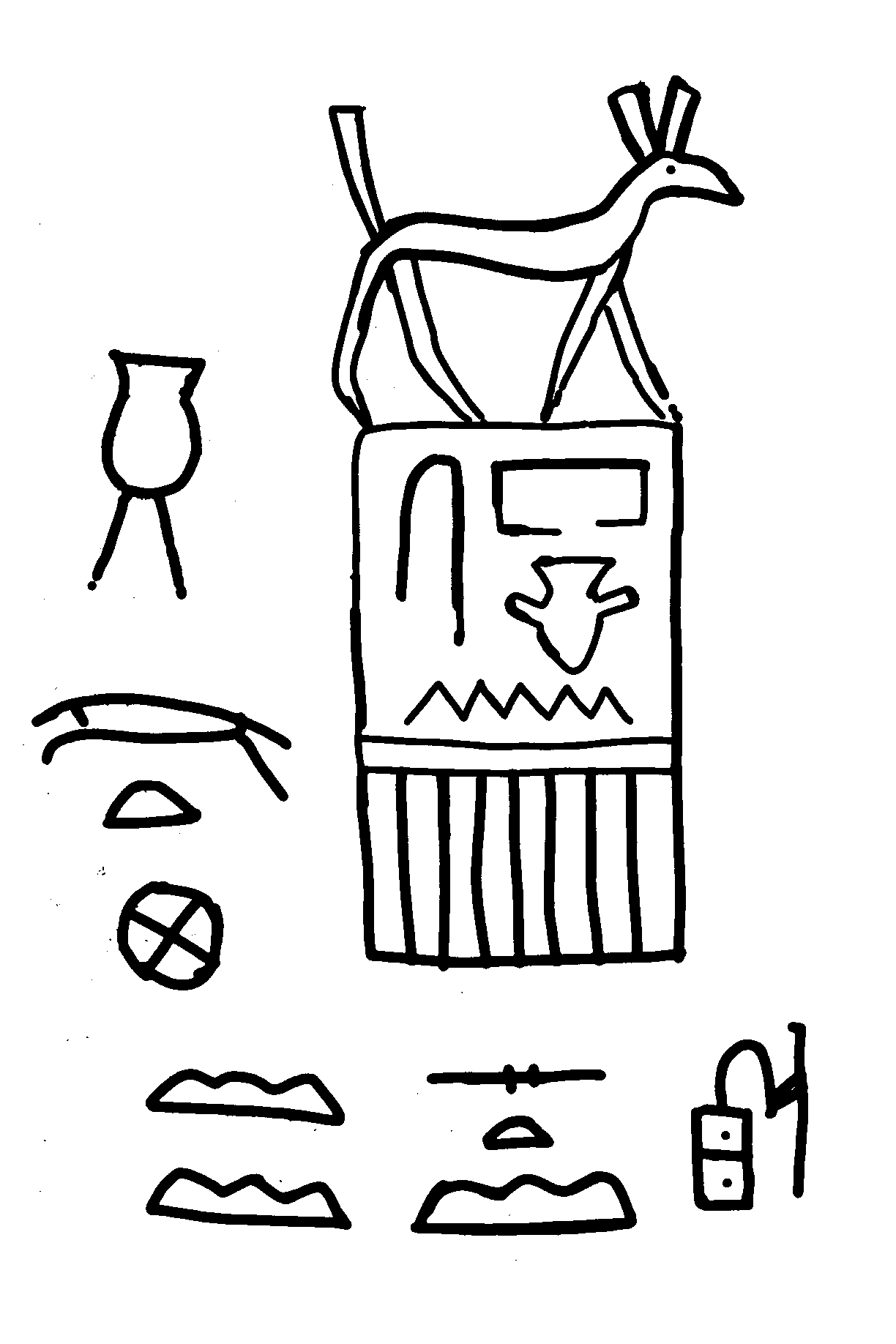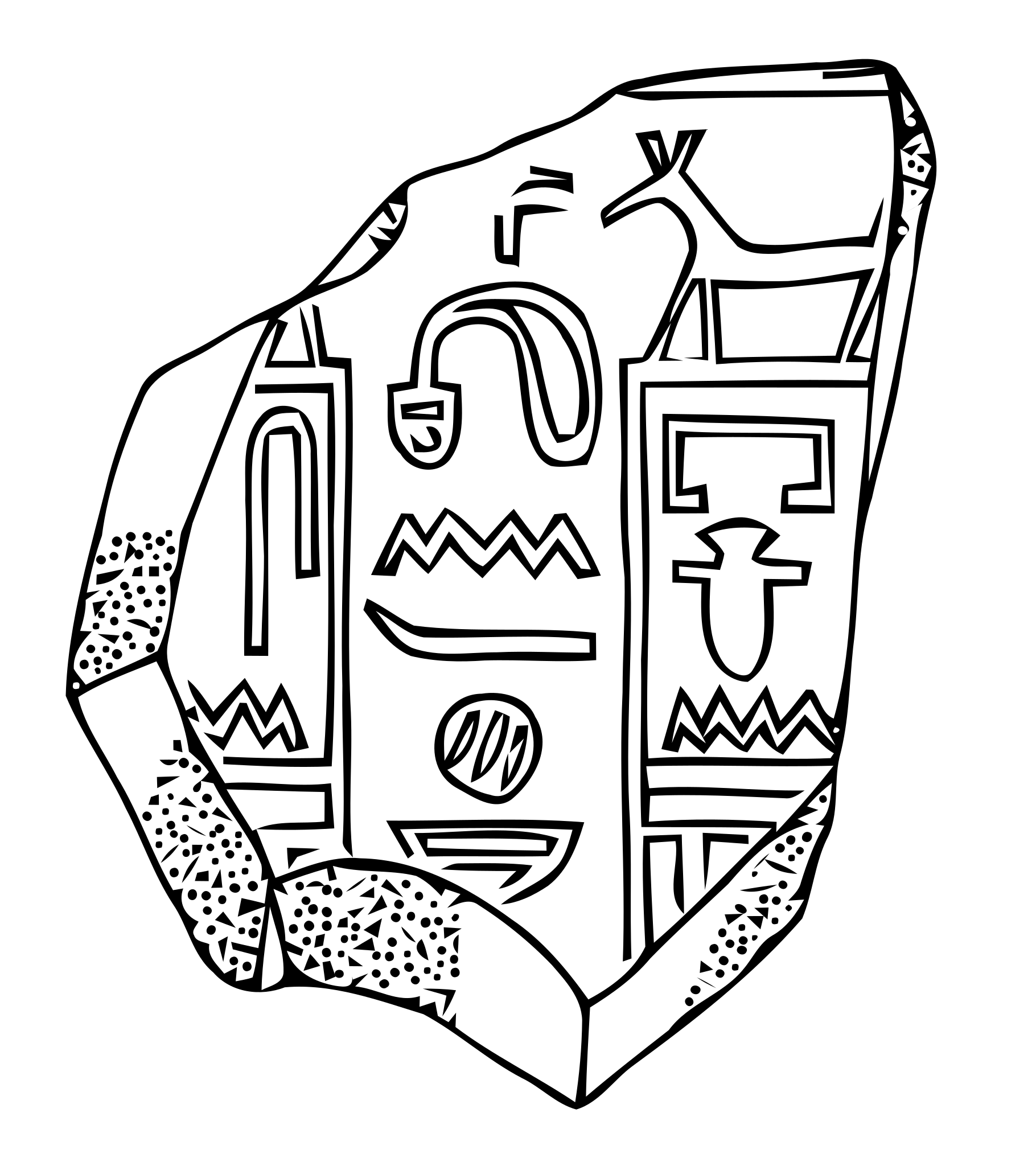
Granite stela of Peribsen
From Abydos, Egypt, 2nd Dynasty, around 2800 BCE
Height: 113.500 cm, width: 33.000 cm
Gift of the Egypt Exploration Society EA 35597
© Trustees of the British Museum

|
This is "One of a pair which stood at the entrance to the king's tomb". Petrie's Royal Tombs of the Earliest Dynasties has a photo of both the steles:


 Line detail I created from above photo....  How the name of Set is referred to in the "people of Sethroë"
 My refining of a PNG after a SVG by Andel, original After Hermann Alexander Schlögl: Das Alte Ägypten. S.77ff.
The museum website is claiming the standing figure in the seal below is the god Ash, but is it Set wearing the white crown, as the figure definitely has a pronounced snout?
 This clay seal with the name of the sealer Nihebcheneb features Peribsen's serekh Drawn by Nephiliskos after Peter Kaplony (1963) Inschriften der Ägyptischen Frühzeit Source: https://commons.wikimedia.org/wiki/File:Nihebcheneb.svg
Petrie's "Royal Tombs" features a line drawing of a similar seal of Peribsen showing a snouted deity wearing the tall white crown:

"Since the reign of Peribsen, the Libyan god Ash can be depicted with the head of Seth, as well as with a human head or a falcon's heas. We see then that a considerable time before the N.K. Ash, the foreign god, could be conceived as a form of revelation of Seth, the lord of foreign countries." (Seth, God of Confusion: A Study of His Role in Egyptian Mythology and Religion, by H. Te Velde, page 114) Let's have a closer look at Peribsen's name: "So far as could be checked, only one king took a separate Seth name besides his Horus name. This happened in the 2nd dynasty. The Horus name of this king was Sekhemib and his Seth name was Peribsen. We are justified in calling it a Seth name, because the Seth-animal is depicted over the serekh, instead of the usual Horus falcon." 1 All the translations I've seen of Peribsen’s name are making a "pri" out of a "per". "Per" means "house, palace, seat of government"2. "Pri" means "go, come out, be reknowned, burst forth, go up, ascend", via Faulkner (via Cintron)3. TeVelde's Garnot seems to take the 'pri' as perhaps to 'come out' and be 'revealed', for as translated from the French, I get “The desires of both are revealed.”4 But what if the 'per' is really a 'per'? To say of the king that he is “the house of their desires” is to say that the two gods DWELL within him, and thus their hearts, their desires are within him. I think this is closer to what the ancients meant. Not only that, as we examine the hieroglyphs in Faulkner's Dictionary , we see 'Pri' is formed of three glyphs, not just the 'per' glyph, but also the 'ren' glyph and the 'walking feet', which are not in Peribsen's name.5
1. Herman Te Velde, Seth, God of Confusion: A Study of His Role in Egyptian Mythology and Religion, trans. Mrs. G. E. van Baaren-Pape, (Leiden, E.J. Brill, 1977), 72.
  
|